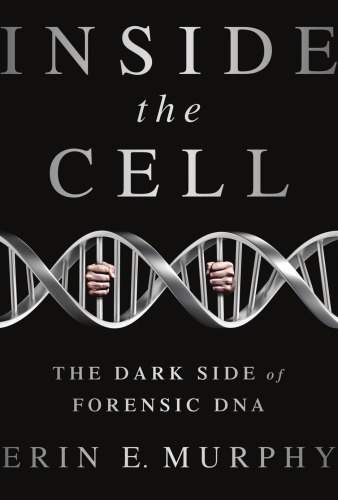
Inside the Cell
The Dark Side of Forensic DNA
کتاب های مرتبط
- اطلاعات
- نقد و بررسی
- دیدگاه کاربران
نقد و بررسی

October 19, 2015
Law professor Murphy shows that forensic DNA testing is far from an infallible, incorruptible scientific process, despite its depiction in popular media. Indeed, she argues extreme caution against putting much faith in this technological achievement, which she calls "neither savior nor cure-all," even as judges, juries, and prosecutors increasingly rely on it. An introductory technical discussion of the basics of DNA testing serves as a useful baseline for the rest of the book, in which Murphy describes the pervasive issues that complicate the narrative of DNA as incontrovertible evidence. These issues are myriad, from the perhaps unsurprising risk of sample contamination to wholly appalling cases of outright fraud. Murphy discusses the implications of DNA testing on issues of privacy and racial disparities in the U.S. criminal justice system, especially in light of local, state, and national DNA databases; commercial uses of DNA testing; and law enforcement activities such as DNA dragnets. The book is full of cases and examples that propel Murphy's discussion forward and will no doubt unsettle the average citizen. Thankfully she also provides actionable recommendations for policy changes in a legal system that so far has little to say about the collection and uses of DNA. As Murphy says, "The technological and legal landscape are at the brink of a tectonic shift," and she encourages vigilance in the protection of our liberties. Agent: Sanford J. Greenburger Associates.

August 1, 2015
A critique of the criminal justice system's overreliance on forensic DNA, focused on legal and scientific questions underlying the topic's CSI glamour. Since "DNA analysis has closed innumerable cases that otherwise might have gone unsolved," writes Murphy (Law/New York Univ.), ."..no one likes to admit that even a savior can have flaws." Yet, law enforcement continually expands its reliance on forensic DNA; agencies now routinely run crime scene evidence against the national database, resulting in more clearances but also many false positives. As Murphy notes, "new technologies have vastly improved technicians' ability to wrest typeable results from old and degraded samples, but those results are often more contestable." Furthermore, the courts have "turned a blind eye on DNA methods that push the envelope of lawful investigative tactics, including surreptitious sampling [and] dragnets," the extent of which are generally concealed. California popularized the use of "familial" DNA searches following the apprehension of a serial killer, the "Grim Sleeper"; such searches have since been used to indict relatives of sexual assault victims in unrelated crimes. Murphy discusses many instances of incompetence, malfeasance, or overreach in crime labs. Although "DNA databases are not meant to be played like Go Fish" by law enforcement, she argues that police are generally more focused on entering new profiles into their systems than in addressing evidence backlogs. Local law enforcement often keeps "rogue databases" without consistent oversight, and private companies have been moving into this potentially lucrative field as well, despite obvious civil liberty concerns. The author concludes with policy proposals for reforming the chaotic DNA policy landscape, noting that "America's forensic laboratory system is wholly decentralized, with dramatic variation in quality...[many] are understaffed, under-resourced, and overtaxed." Murphy writes authoritatively but focuses too much on scientific and legal minutiae, resulting in a study that lay readers may find difficult to penetrate. A specialized work that will appeal to attorneys, investigators, crime writers, and others on the frontiers of forensic DNA laws and technologies.
COPYRIGHT(2015) Kirkus Reviews, ALL RIGHTS RESERVED.

September 15, 2015
Murphy (law, New York Univ. Sch. of Law), an authority on forensic DNA, has dual goals with this book: to demonstrate that forensic DNA testing is far different from what we see on TV crime shows, in which testing is immediate and 100 percent reliable, and to point out that, despite the dependability of science, there are several potential systemic pitfalls in how DNA evidence is handled, from collection and analysis to usage in court. She describes the subjectivity that is involved in testing DNA, providing instances of errors and misuse, and clearly documents how DNA testing can and does go wrong, even demonstrating how DNA typing is done and where mistakes can be made. For example, material can be transferred, meaning results may be yielded from a person who had no direct contact with a crime. Furthermore, DNA can mislead, argues the author, detailing the broad concerns of privacy and equality in the way that testing is completed. VERDICT This title will best serve those who are involved in the criminal justice system, from university educators to law enforcement officials.--Krista Bush, Shelton, CT
Copyright 2015 Library Journal, LLC Used with permission.

























دیدگاه کاربران